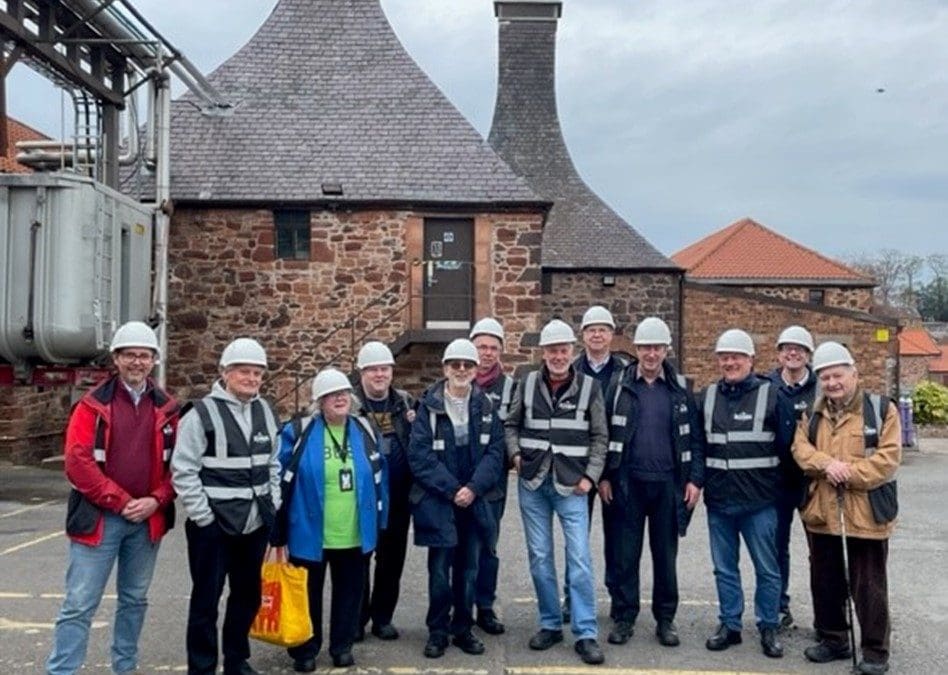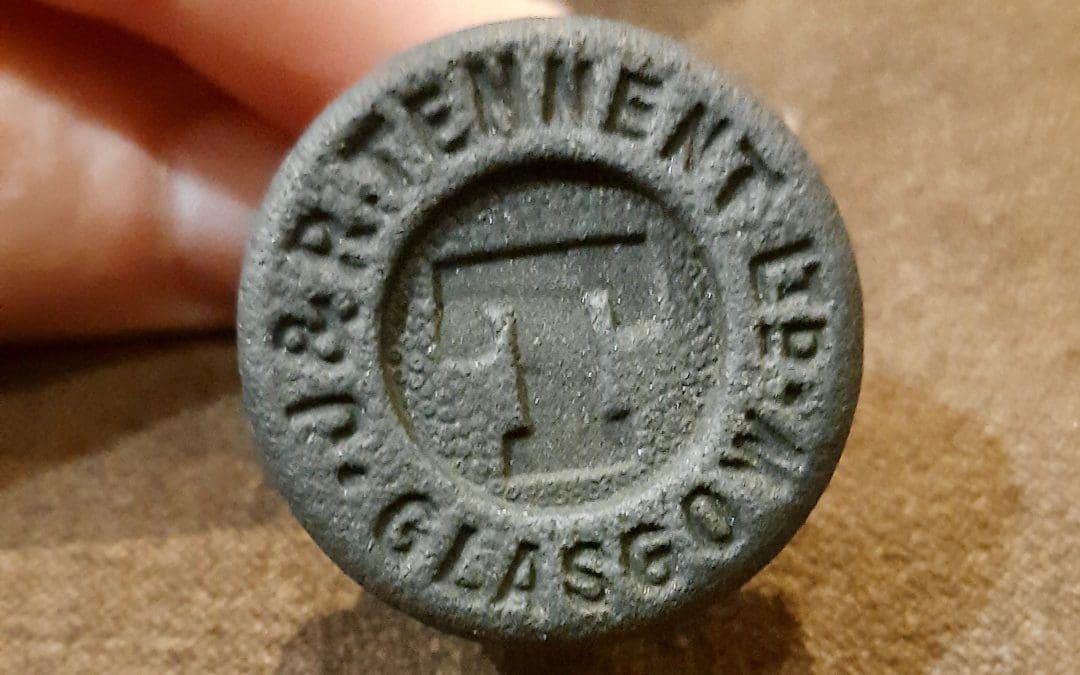1. Chairman’s Statement
Let me start by congratulating Sir Geoff Palmer, who has been appointed the new Chancellor of Heriot-Watt University.
For those who don’t know, Sir Geoff is not only a renowned scientist and a human rights activist, but was also responsible for the formation of the Scottish Brewing Archive and a life member of the SBAA. As Chancellor, Sir Geoff will play a central role in promoting Heriot-Watt’s International reputation as a pioneer in research and education across its campuses in Scotland, Malaysia and Dubai.
The SBAA wishes Geoff the very best with this venture.
The SBAA would also like to thank everyone who has made a contribution to this Newsletter, with many varied and interesting bits of information.
Please keep it going.
The SBAA held its first committee meeting of the year using Zoom, which went well. At the meeting, Robbie our editor said that good progress was being made of our Annual Journal, which is on target to be finalised later this year.
I hope everyone is enjoying the SBAA website and catching up with many interesting articles in previous editions of the Newsletters and Journals.
We have been hoping to have a SBAA Event , unfortunately Covid 19 restrictions have, so far, prevented this in 2021. However, please see and respond to the suggestion in the “Last Runnings” section of this newsletter.
I would like to encourage everyone to contact Ivor our Secretary with your comments, ideas and articles going forward. After all you are the life-blood of the SBAA.
Take care and keep safe.
John Martin
2. Cooper & McLeod in Australia
Cooper & McLeod Ales were brewed at the Castle Brewery in the Grassmarket area of Edinburgh. Unfortunately, very little is known about this brewery, which dates from 1875 to 1910.
Cooper and McLeod exported ale to Australia and New Zealand between, 1881 to 1895 based on known advertisements. Despite the company’s size it could produce quality ale at a very competitive price. They created a niche in the market competing against better known brands, such as Bass and Guinness that were bottled by M. B. Foster & Sons, who claimed that it had produced 8,444,772 bottles of beer in 1890.
Most of the export of Cooper & McLeod’s ale went to south-east Western Australia where it had a good reception. Being advertised there by agents Dalgety & Co, Reilly & Co and J M Ferguson as part of their inventory of stock in small advertisements from 1885 until 1895.
Interesting to note:
Hogsheads of Cooper & McLeod’s ale were listed on the manifest for auction after the Denton Holme carrying iron pipes and 300 tons cargo, stuck fast and sunk off Rottnest Island on the 25th September 1890.
While in South Australia the company had won first place at The Adelaide Jubilee Exhibition during the September 1887.
Following this award, forwarding agents on the east coast of Australia embraced their beer, with larger advertisements in papers such as the Sydney Bulletin New South Wales from the 28th October 1887 to 21st April 1888 and the Table Talk in Victoria 28th February to 15th August 1890. Despite being a quality product the advertising was short lived. I would speculate the company was unable to meet the new demand for its products when exporting.
Right: Cooper & McLeod India Pale Ale Label. Courtesy of the Labologist’s Society, Pete Standen & Keith Osborne.
Below: Advertisment that appeared in The Sydney Bulletin 5th November 1887. R. Cunyngham Bond St Sydney.

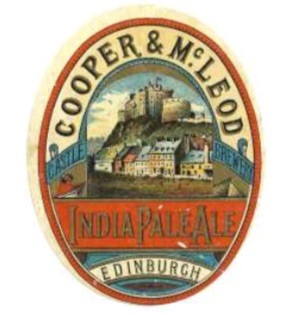
Small quantities could be found in auction notices in eastern Australia. This was advertised in the local papers for amounts between 50 to 150 Cases of bottled ale.
During the early part of 1888 a supply of quart bottles reached the hotels servicing the Cairns-Herberton Railway construction site. This was situated to the west of Cairns in Far North Queensland. At one of these abandoned hotels in the bottle dump I saw the neck of a green quart bottle with most of the foil still attached. This bottle must have been broken in transit, as the foil was still mostly intact. This led to the discovery of Cooper & McLeod’s exports to Australia.
Below: Advertisement from Table Talk, Melbourne 28th February 1890. This advert was not associated with any agent.

Further research is ongoing and will be the subject of a larger article to appear in next years Journal.
3. Revolutionary Roasting of Malt
The practice of ‘roasting’ malt can be traced back to the start of the 19th Century. Black and Crystal brewing malts were and are used to impart flavour and colour to a range of ales, porters and stouts. The traditional process involves large roasting drums , high on energy consumption and not without danger as the grain is heated close to the point of combustion. In this article by Hannah Beer, from one of our SBAA corporate members CRISP MALT, explains the latest technology. I’m sure this will be of particular interest to members who have experienced the roasted drum process first hand.
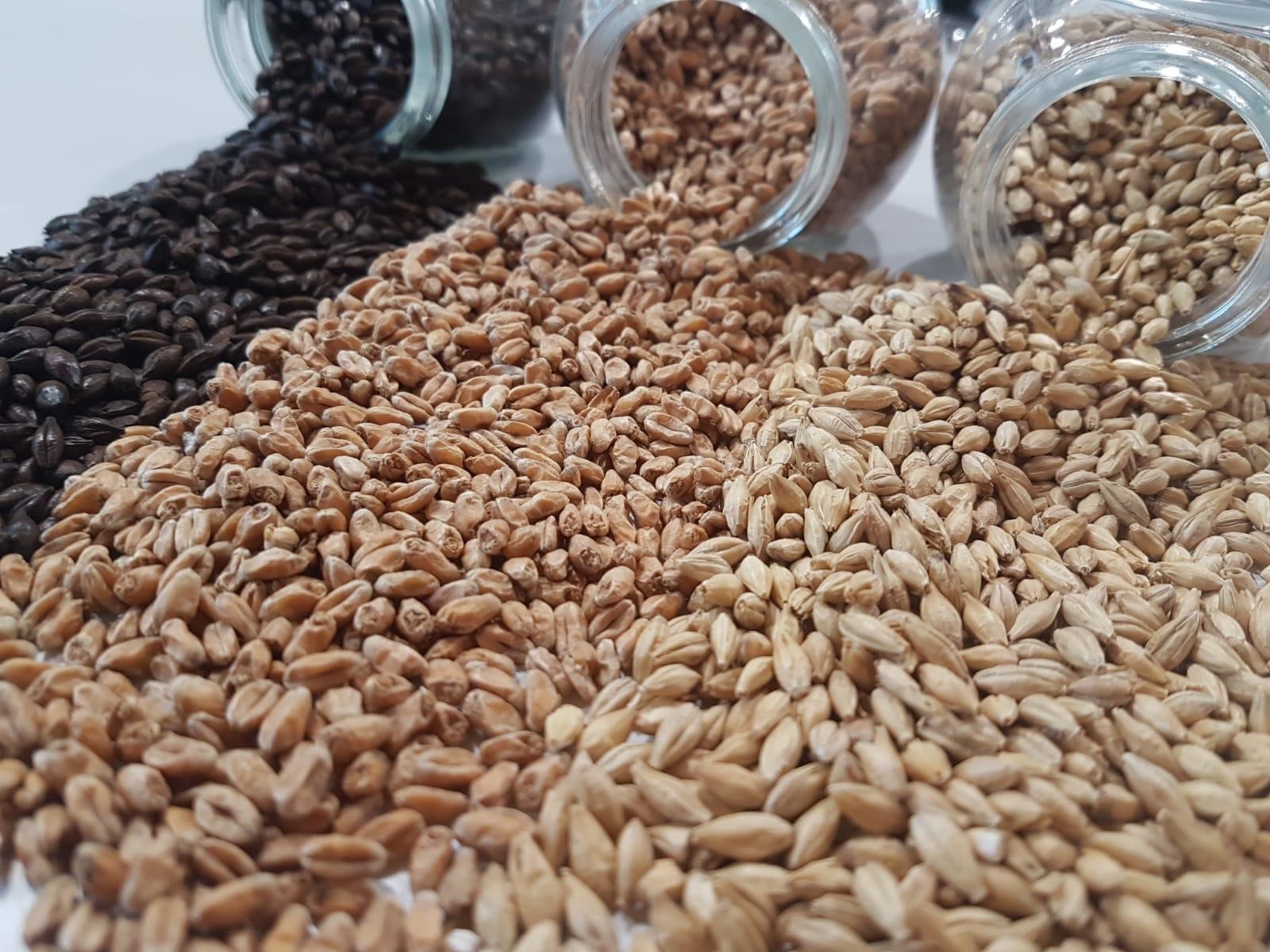
Roasting malt has taken a dramatic shift in terms of technology in recent years at Crisp Malt. Historically, malt would have been roasted on the familiar drum roasters. However, an innovative development from RevTech has brought about the introduction of a novel way of roasting and crystallising malt.
This unique system comprises of two towers of spiraling tubes, in which grain is treated by direct contact with an electrically heated surface. Off-balanced motors generate vibrations, which cause the grain to be transported upwards through the system. These vibrations also ensure thorough mixing throughout the malt’s journey through the continuous system, which allows for extreme consistency between each and every grain. Raw material is fed into the fully automated equipment at a set flowrate, and progresses through a number of independent heating zones, each of which are finitely controlled to within a single degree. A facility to add hot air into the tubes also allows for a confined treatment atmosphere. These factors ensure that each individual grain is treated identically.
Roasted malts are made by feeding kilned malt (malt that has been through all steeping, germination and kilning stages) into the bottom of the first tower. Temperature profiles are thus set to achieve the desired product. For example, Amber Malt is made using moderate temperatures, whereas Black Malt (the darkest of malts) is roasted at the highest of temperatures. Through process and quality optimisation, the malt develops the perfect colour and flavour, all determined by a simple recipe, and the automatically, precisely controlled system. Upon exit, the malt is immediately quenched and cooled.
Crystal malts are made using a different raw material: green malt. This is the malt at the end of the germination stage, which hasn’t been kilned. Crystal malts are made in two stages. The first stage is stewing, which involves heating the grain in a moist environment, where all air input and extractions are closed off. This causes the endosperm of the grain to liquefy. Once the saccharification has occurred, and the endosperm is fully converted, the second stage of crystallisation and drying occurs. Here the grain is treated with increased temperatures, and air flows remove the moisture, allowing for the liquefied endosperm to harden. This results in the sweet, glassy structure that is synonymous with crystal malts. Like roasted malts, upon exit, the crystal malt is immediately cooled.
A truly wonderful piece of technology, and a groundbreaking advancement for speciality malt production.
Hannah Beer(Crisp Malt)
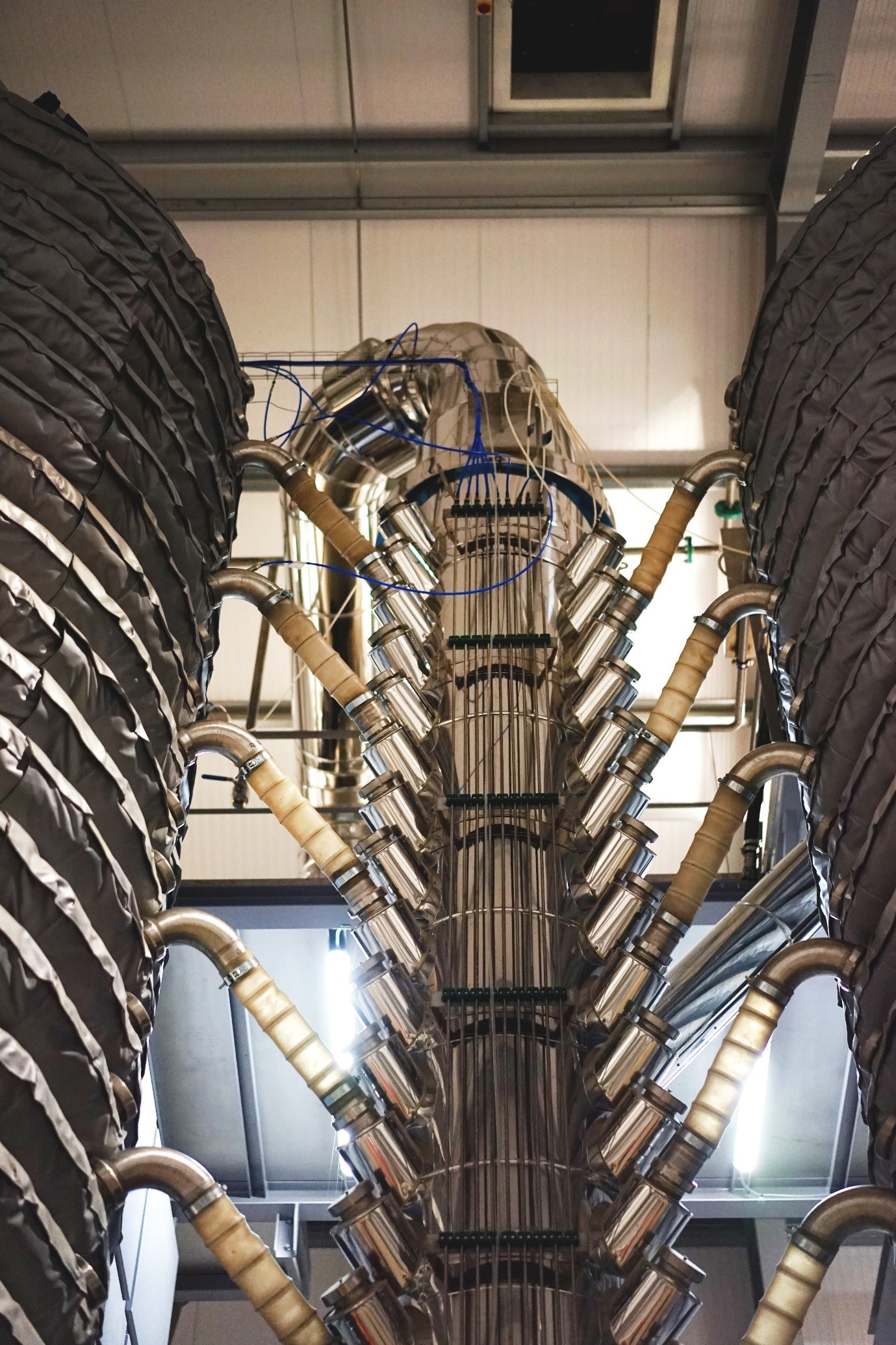
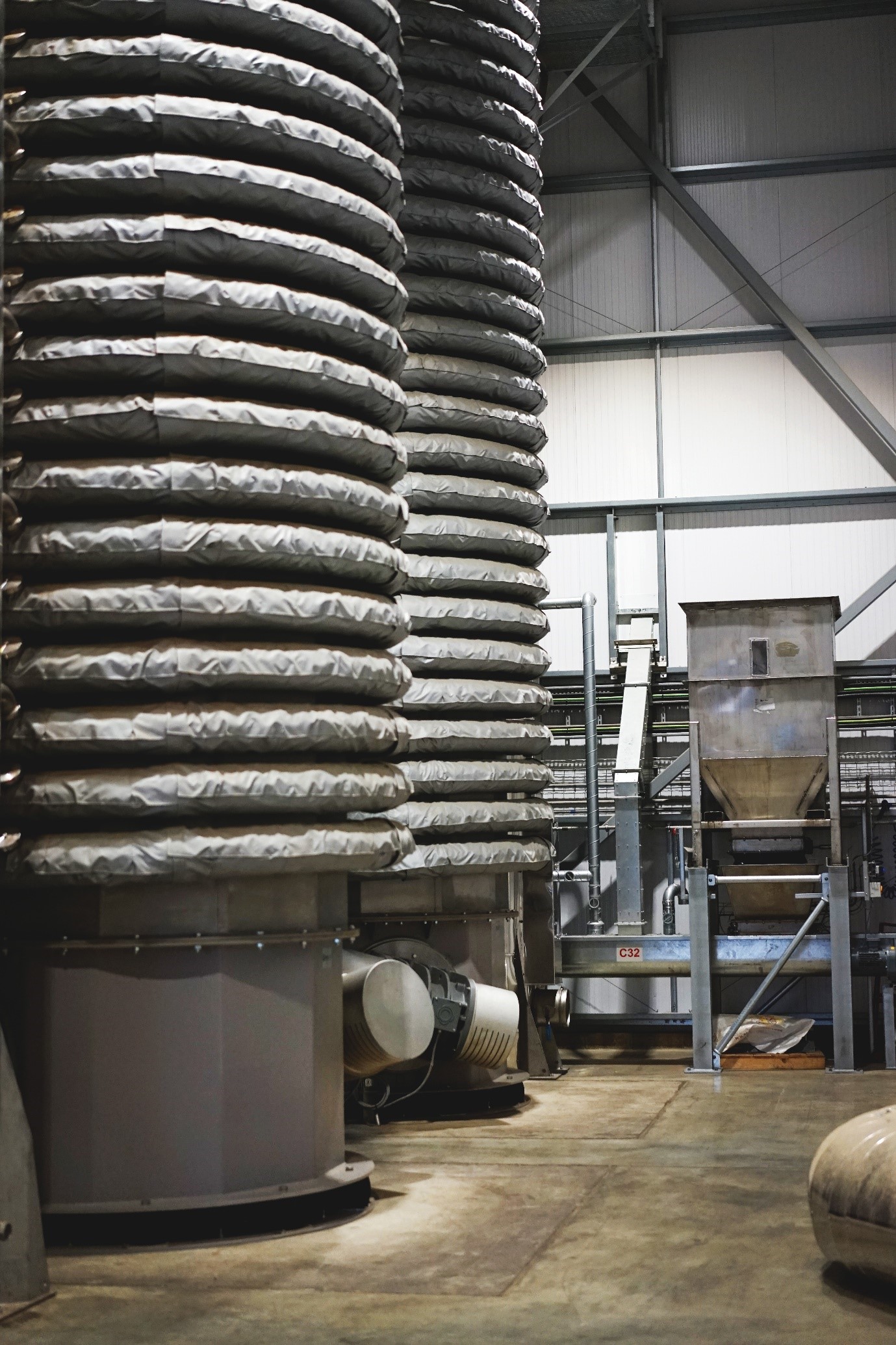
4. Drybrough Development
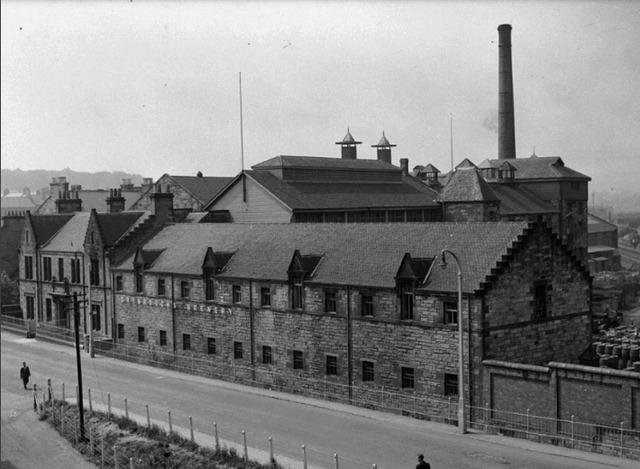
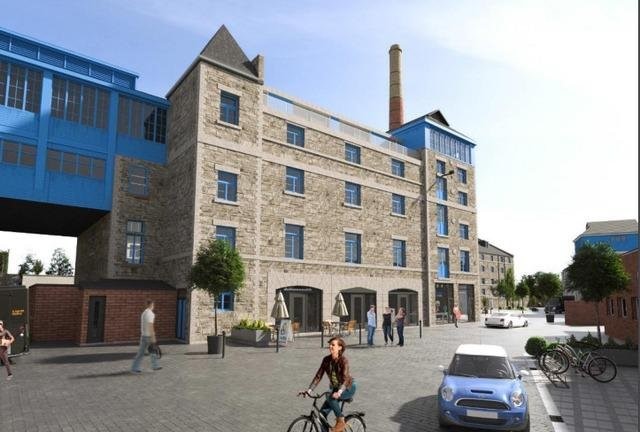
Thanks to Bill Brown who picked up on an article in the “Edinburgh Evening News” 20th April. In which the fate of the remains of the Drybrough Brewery were discussed. An Edinburgh developer is seeking to sympathetically , see artistic impression on the right, redevelop the Craigmillar site. “This is a development that is desperately required in order to secure the future of this group of listed buildings, possibly one of the last remaining complete brewery sites in the Lothians. We have all the operational buildings present, and adjacent, but outwith the site boundary we have the workers’ tenement and the main brewer’s house. A very important and significant collection of buildings in terms of the industrial heritage of Scotland”.
5. Name the Brewery ?
Some sharp-eyed members spotted the monument on the hill and concluded that the brewery was close to Calton Hill and suggested Holyrood or Abbey Brewery.
In fact, it’s the Glasgow Necropolis in the background. The brewery is Wellpark with the original Lager brewhouse prominent. Check out Journal Vol. 1 1998 on the website
J&R Tennent’s Lager the German Connection by Stefan Manz for its fascinating history.
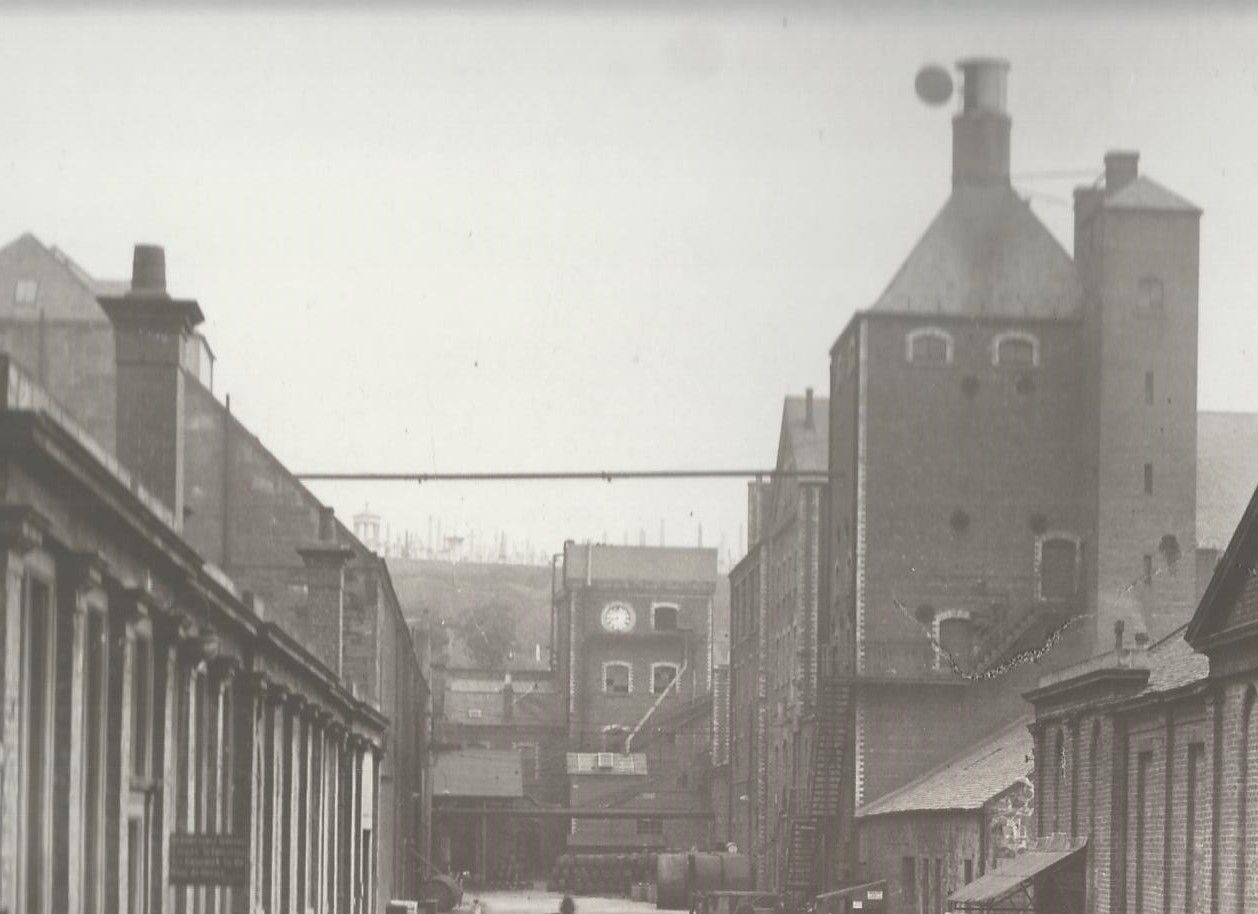
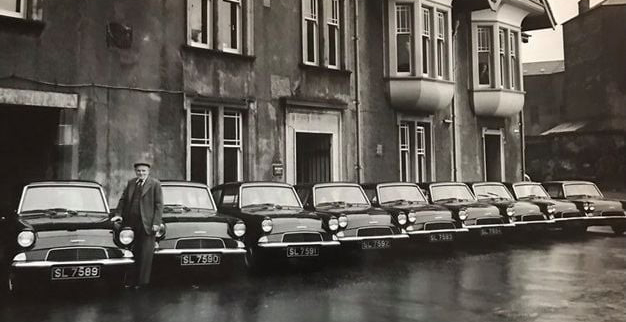
To avoid giving too much of a clue I won’t reveal, for now, the name of the member who supplied this nostalgic photo. When the photo was taken the building was the Brewery Offices. However, was originally what Brewery ? The Brewer ? and for a bonus point the type of new cars for the sales fleet?
If you have any old photos in your personal collection, please send them in , particularly if they haven’t been seen before by a wider audience , the SBAA is your showcase.
Scottish Brewing Archive – Catalogues
Clare Paterson (archivist and SBAA member) and the team at Glasgow University are working on having the entire brewery catalogues available on line using their new DISCOVERY system . The Committee are going to provide feedback on the system to Clare with a view of publishing the link and instructions in the next newsletter. Clare has delved into the system and has provided the following topical example of what’s hidden in the archive.
Tennent’s & the Scottish Football Team
With Euro 2020 excitement still with us, albeit without continued Scottish interest, it seems fitting to bring some of the highlights of Tennent’s support for the great game.
Tennent’s links with Scottish football are longstanding, something celebrated in the company’s current MADE FOR THIS campaign. Almost 50 years ago, Tennent’s backed the Scottish national team at the 1974 World Cup , offering a £115,000 bonus to the team if they brought the Cup back to Scotland. Things stepped up a gear in 1978, with Morecambe & Wise being brought in to lead the Tennent’s campaign behind Ally’s Army all the way to Argentina. The Archive contains photographs and posters of the campaign, and write-up in The News of Morecambe & Wise’s visit to Wellpark. We also hold the full set of Scottish National Team beer mats for the ’74 World Cup. The 1982 World Cup leaves its mark in the Archive in the form of a jumper and some promotional cans. You don’t find many jumpers in archive, but that is one of the joys of business archives!
Let’s keep our fingers crossed it’s not so long until Scotland is involved in an international championship again!
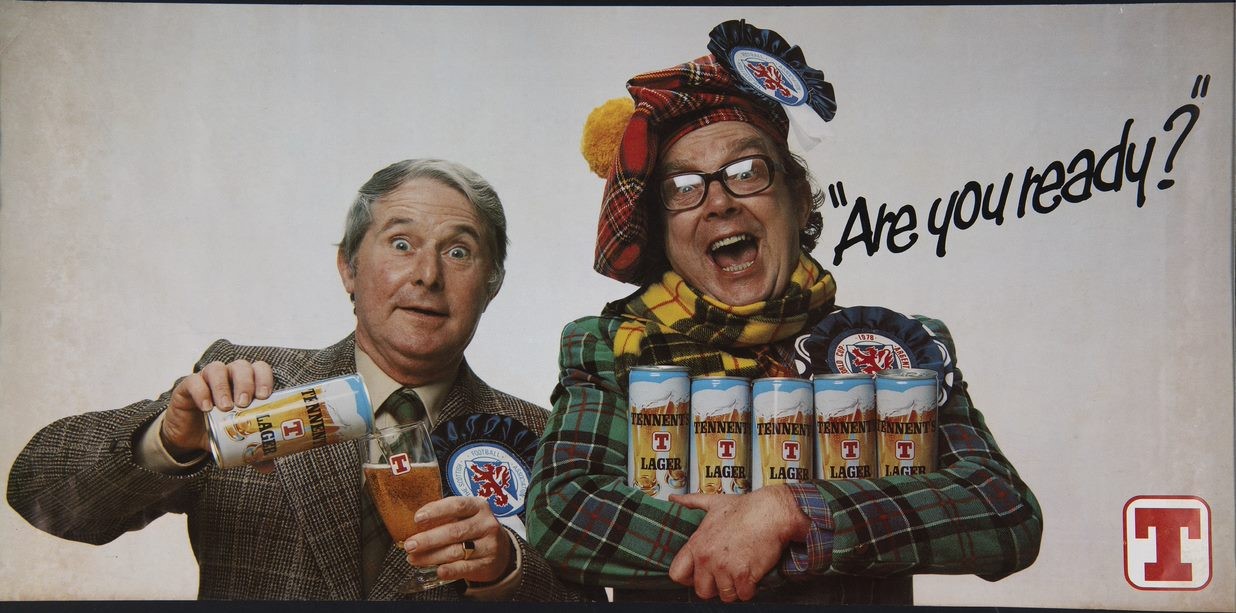

Footnote : On the morning of the 18th June before the England Vs. Scotland match. BBC national Radio programme 5 LIVE came from Wellpark Brewery. SBAA members George Kyle and Keith Lugton gave excellent interviews covering the history of the brewery and the sponsorship.
7. Last Runnings
![]() Event Suggestion – Covid 19 restrictions allowing. It is proposed that members meet in a central Edinburgh hostelry around 6pm on the evening of Thursday 2th September 2021. With light nights and a fair chance of decent weather we would embark on a historic brewery walking tour under guidance of our knowledgeable Chairman returning for a blether and a pint.
Event Suggestion – Covid 19 restrictions allowing. It is proposed that members meet in a central Edinburgh hostelry around 6pm on the evening of Thursday 2th September 2021. With light nights and a fair chance of decent weather we would embark on a historic brewery walking tour under guidance of our knowledgeable Chairman returning for a blether and a pint.
![]()
![]()
![]()
![]()
![]()
![]()
![]()
![]()
![]()
![]()
![]()
![]()
![]()
![]()
![]()
![]()
![]()
![]()
![]()
![]()
![]()
![]()
![]()
![]()
Correspondence to the SBAA Secretary ivor.reid@sky.com
SBAA Newsletter No. 48 – July 2021

